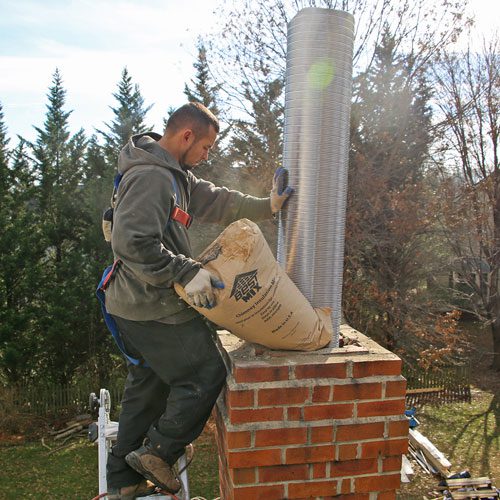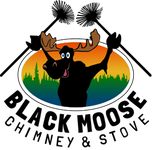
Chimney liners are sometimes a neglected necessity. Older generations sometimes don’t see the need for chimney liners. However, industry professionals that study safety and fire science constantly strive for safer, more efficient options for consumers. Chimney liners are a necessary part of the chimney system. In addition, they play many roles for the safety and efficiency of your chimney.
The Liner Protects the Chimney and the Home
- The chimney liner serves as a refractive barrier between the hot fire and the home materials. Without a liner, the heat from the chimney can weaken building materials over time. These include beams, walls, and flammable insulation.
- The chimney liner serves as a barrier that prevents poisonous gases from entering the home. Masonry is designed to be porous, allowing vapors to escape once outside the home. However, if harmful gases like carbon monoxide are allowed to escape the chimney INSIDE the home, it can cause serious health issues for the family, including carbon monoxide poisoning and respiratory problems.
- The liner protects the masonry from harmful byproducts that coat the inside of a chimney. Soot and creosote can be highly corrosive to masonry, resulting in cracks, holes, and more. When neglected, this corrosion can lead to structural damage as well as polluting the air in the home.
The Liner Raises Efficiency
The chimney liner is fitted to best work with your fireplace, stove, or insert. When fitted properly it works to better vent your chimney. If a chimney is too large or tall for the fire’s capacity, it can cause the air to stall as it rises, resulting in more soot and creosote buildup and can raise the risk of fire. The best way to have an efficient and safe chimney is to have a properly sized and installed liner. Homeowners should have their liner assessed during their annual chimney inspection. This is to be sure that it is in good condition and that it’s made of the correct material. A certified chimney sweep can recommend repairs or relining if the liner isn’t appropriate for your fuel-type.
The Damaged Liner
Of all the things that can go wrong with your chimney, the liner can be one of the most dangerous. This is because of the many ways it keeps your chimney functioning. When you have an outdated or damaged liner it may not need a complete replacement. You can catch a problem early by having your chimney swept or inspected regularly. If your technician finds a problem with your clay tile liner, he may be able to reline it with HeatShield® refractory sealant. A HeatShield® chimney liner is rated for use with all fuels and should last the life of your chimney.
With early detection and relining, you don’t have to worry about minor cracks in your chimney liner. Keep your chimney, your home, and your family safe with a properly repaired or replaced liner.
Our certified chimney sweeps at Black Moose Chimney and Stove are available for quotes and inspections. Call us at 603-525-7905 today!


